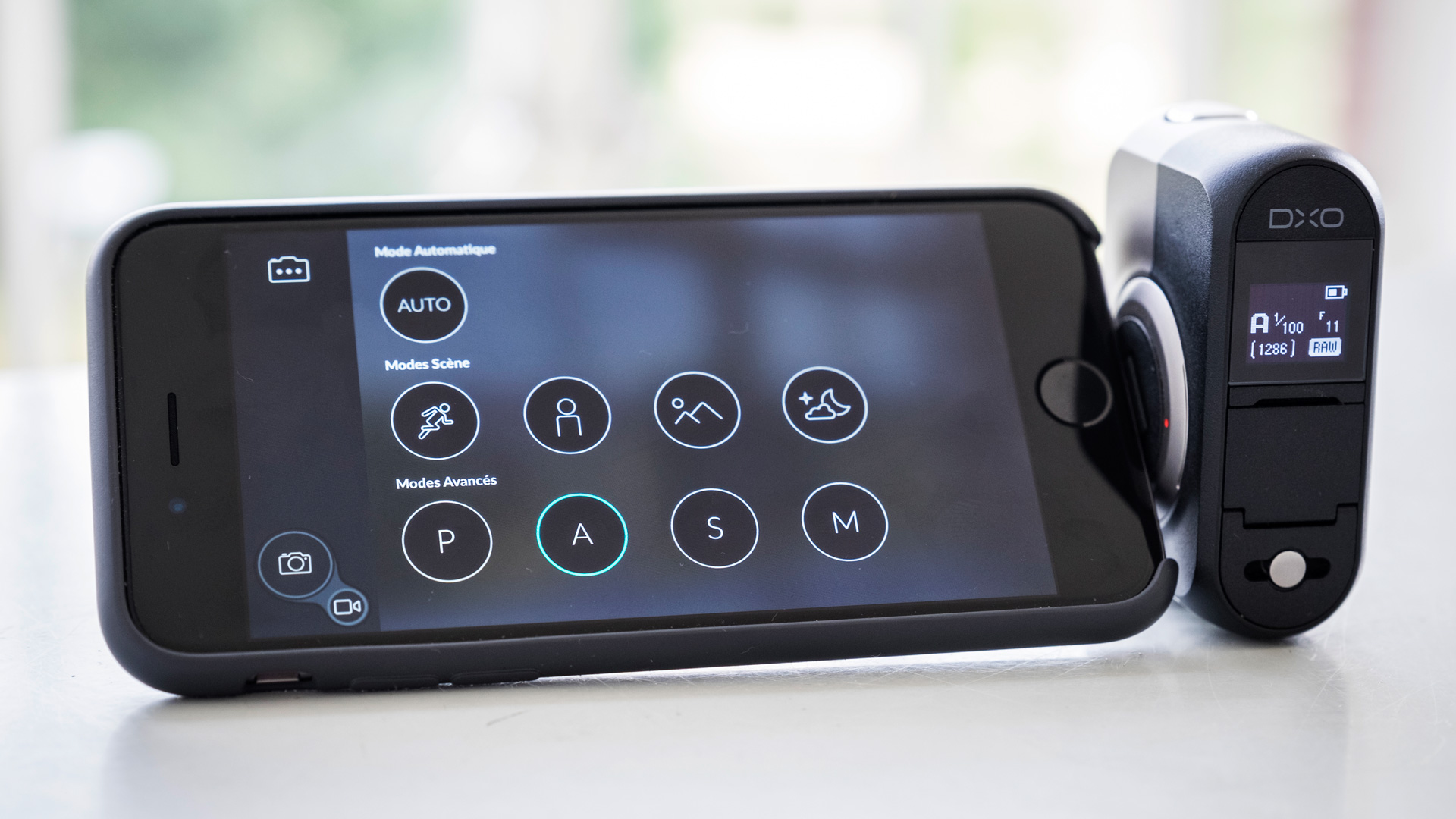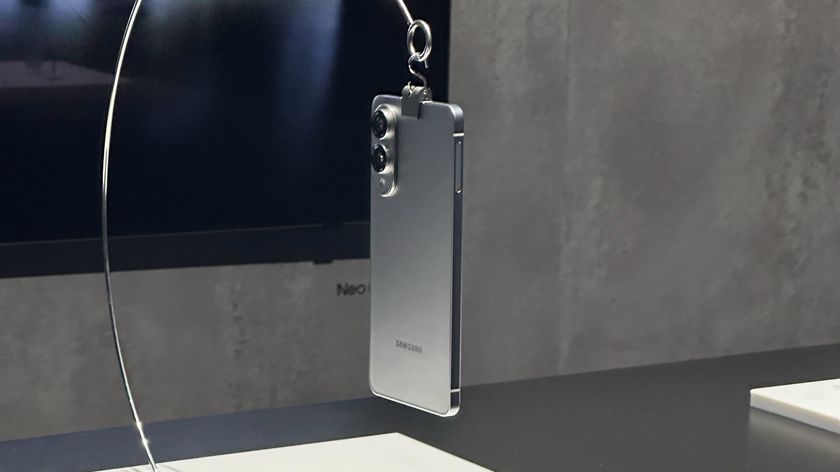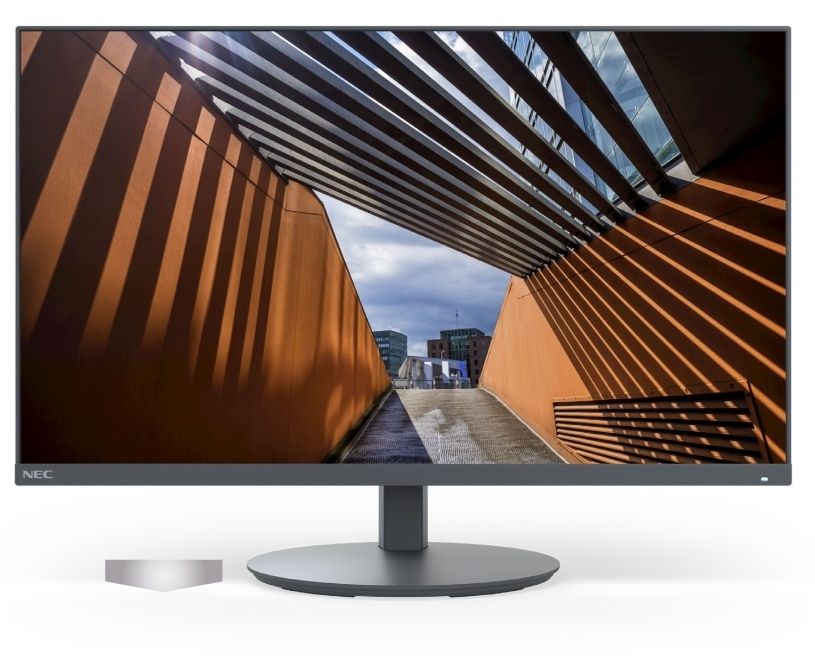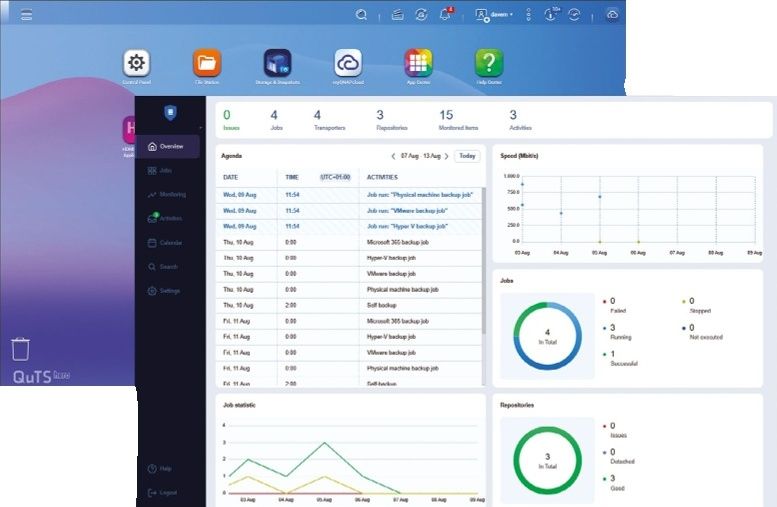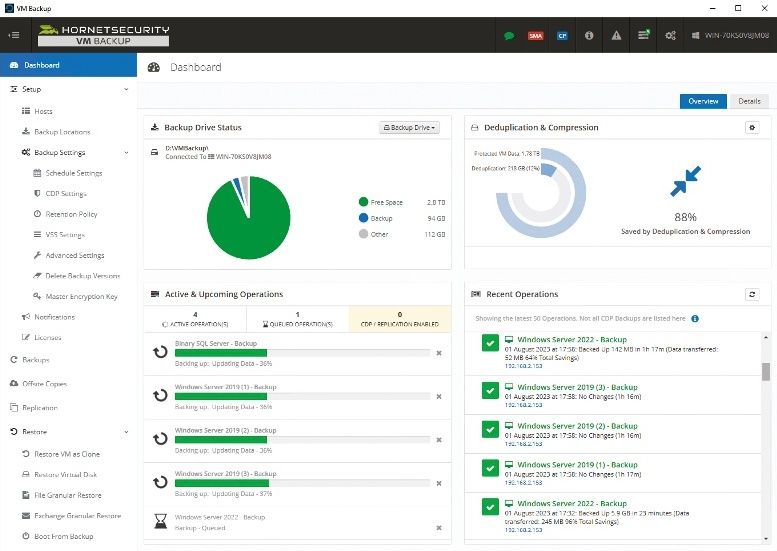Why you can trust TechRadar
Thanks to its aluminium components, the One has a higher quality feel than a GoPro but it's about the same size and has a similar number of controls on its body. Interestingly, the One's size was set to match the iPhone 5 so that in landscape orientation its base aligns with the phone's. This means that the iPhone 6 extends below the One, but it sits comfortably on a table with the iPhone at an angle for viewing from above.
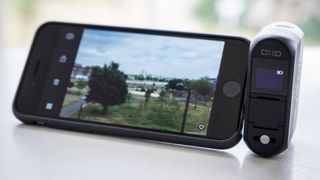
On the front there's a sliding lens cover and the camera powers-up as this is pushed back. Pushing back the cover a second time releases the Lightning Connector on the side of the camera. This slots into an iPhone and doing so triggers the app to start up provided that the phone is unlocked and on the home page. On top there's a physical shutter release button with a two stage movement like there is on a traditional camera, but there's also a virtual button on the iPhone screen. As you'd expect, the phone screen shows icons to access the shooting modes and exposure settings.
The One makes a fairly comfortable small grip on the side of the iPhone, but the phone needs a second hand for support. Different users are likely to hold it in different ways – some may prefer to grip the phone and leave the One hanging; it's light enough to allow that. If you hold the One, you need to take care to avoid your finger straying over the lens.
While the One may seem a good option for travellers and tourists, it's actually rather awkward to use when you're wandering around taking a few shots here and there. It's not especially convenient to hold it connected to the camera when walking around and if you disconnect it you need to bear in mind that you need to unlock the phone and access the home screen before reconnecting (which can be a little fiddly). In additiion, there's a short delay after connecting before the camera is ready for use. In the early days of using the camera I missed a few shots because I didn't anticipate how long it would take to get the One ready for shooting.
The Lightning Connector is on a swivelling base and can be rotated through +/-60 degrees for easier screen viewing when shooting at high or low angles, and a clever release mechanism prevents the connector or the phone port from being damaged if the camera is bent back or forwards. This works well. However, I found the degree of rotation available a little restricting when shooting from high or low angles. There were quite a few situations when it would have been helpful to have been able to twist the phone a little further around to give a clearer view.
Another issue is that the Lightning Connector needs to be in its original orientation before it can be folded away. If you disconnect the phone when it's at an angle you have to reconnect to give the leverage to rotate the connector back to the home position. The lens cover also needs to be pushed down to the release point to enable the connector to be tucked away. It's quick to release but slow to stow.
Occasionally the connector was popped back in when it was slightly out of alignment (or it somehow was rotated after being packed away when it was in my pocket) and a fingernail was required to prise it out while the release was activated.
It would be nice for the connector swivel base to allow the camera to be rotated into Selfie mode without disconnecting and reconnecting, but I'm told that this would have had a negative impact upon the unit's durability. If the camera is mounted with the lens facing the same direction as the iPhone screen it automatically actives Selfie mode.
Once in Selfie mode, pressing the shutter release focuses the lens and the iPhone screen turns a bright peach colour just as the shot is taken. This puts warm, soft light on your face to make a more attractive image and to help keep the sensitivity level down in low light so there's less noise in the shot.
A small touch-sensitive OLED screen on the back of the One indicates the camera settings and when the camera is used in standalone mode it's used to switch between stills and video mode with a swipe. A dot indicates when the lens has been focused. The camera works in fully automatic mode when it's in standalone mode, but at some point in the future it's planned to allow users to use the app to specify how they want the camera to operate when it's used without an iPhone. It's tempting to use the One unconnected for speed, but it means composition is guesswork so I wouldn't recommend it.
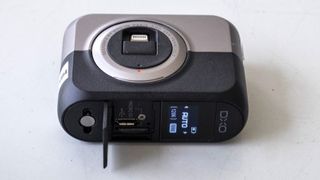
When the camera is connected, I found it really easy to locate the settings that I wanted and to make adjustments, but there are some inconsistencies in how they are adjusted. When you tap aperture, shutter speed or exposure compensation, for example, a virtual dial appears for you to rotate to the desired setting. Tapping the white balance setting, however, toggles through the options. According to DXO this will be addressed by a firmware update and the white balance setting will be changed using an on-screen dial.
There's face recognition, but a tap of the screen can also set the focus point just as you would normally with an iPhone. Focus speed is about the same as with an iPhone normally. There were several occasions during this test when the AF area would be displayed on the phone's screen but it wouldn't display it if I tapped in another area. On other occasions it was fine for one shot, but wouldn't allow me to set the AF area for a second shot.
Although the One is essentially an iPhone accessory, it feels well integrated and is easy to use although it takes a little longer for captured images to appear on the screen than it does when using the iPhone camera.
The One's battery is claimed to last for 220 shots or 90 minutes of video recording (maximum recording time is 29 mins 59 seconds at a time). We found that to be rather optimistic. When using the One out on a shoot around London I got 144 images on a single battery charge despite taking great care to preserve battery power and quickly turning the camera off after shooting. In the lab, taking 150 images reduced the fully charged battery to 20% power. When the power drops to this level or lower we found that the camera can become a bit temperamental and sometimes refuse to start up the shooting mode. If you're planning to take a series of images over several minutes it can be alarming to see how quickly the battery life slips away and you quickly you need to get into the habit of closing down the camera between shots.
Writing times are also a bit on the slow side and images take a little longer to appear on the screen than when using the iPhone camera.
